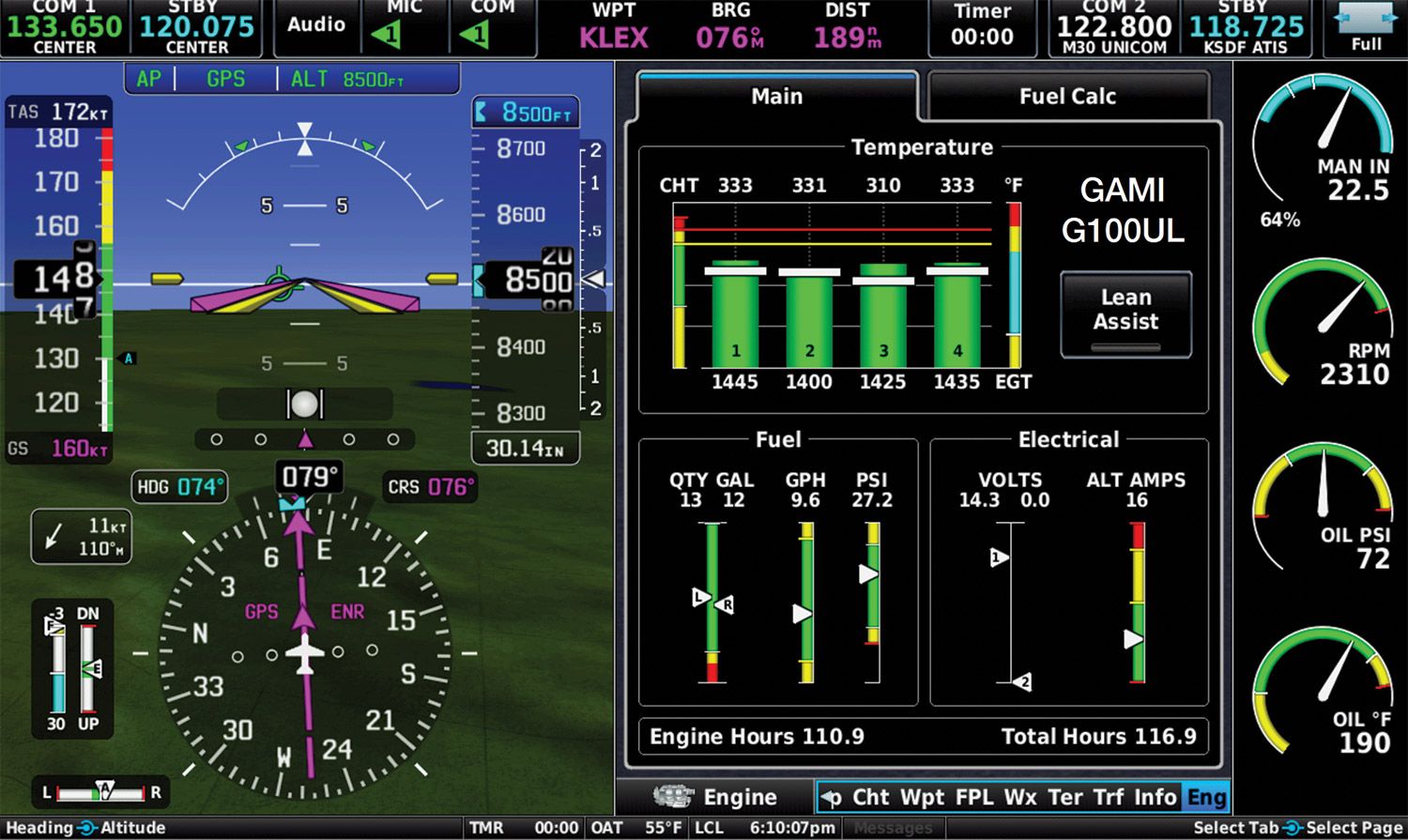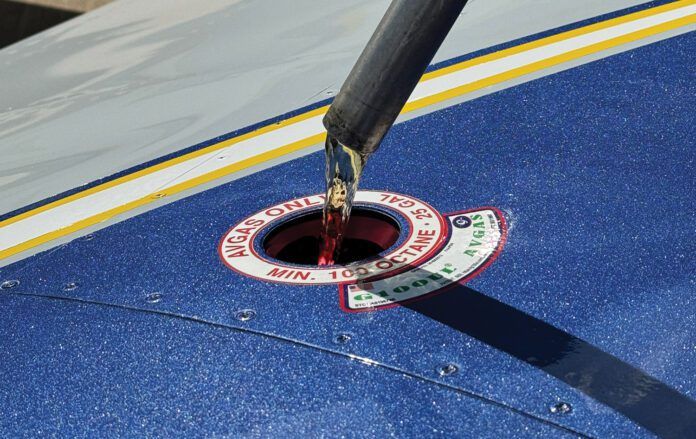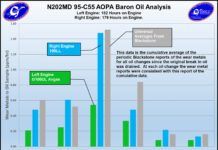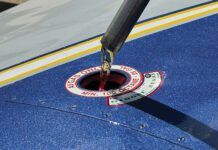GAMI (General Aviation Modifications Inc.) is we’ll known for its GAMIjector fuel nozzles, several turbonormalizing engine upgrades and, most recently, for developing the first (and so far, the only) high-octane unleaded aviation gasoline. Known as G100UL, it was approved by the FAA in 2022 to operate in all piston, spark-ignition aircraft engines and is currently the only avgas to have an FAA-approved commercial production specification.
I have been aware of GAMI’s unleaded fuel development program since it began in 2009. With its 2022 FAA approval, I added G100UL to the fuel limitations section of the Airplane Flight Manual for my completed Van’s RV-14 (“White Lightning”) prior to its FAA inspection and licensing. To my knowledge, as the builder/manufacturer of the aircraft, I became the first to approve operation on an unleaded 100-octane aviation gasoline. And so I made a stop at GAMI’s Ada, Oklahoma, headquarters and tanked up with G100UL.
Top It Off
Before launching off on my return trip, we transferred my remaining 100LL fuel from the right tank to the left, then topped off the right tank with 25 gallons of GAMI’s G100UL. The engine in my RV-14 is a 215-HP Lycoming YIO-390-EXP.

I started the trip drawing fuel from the right fuel tank, burning the unleaded G100UL avgas. After taking off and a high-speed low pass for the cameras, I was on my way, climbing at wide open throttle to 10,500 feet. One of the goals for any new replacement fuel is to be completely transparent in its operation to the pilot. The ability to switch between the left fuel tank with 100LL and the right with G100UL was the perfect situation to measure and document any differences between the two, using Garmin’s G3X flight data recorder. Besides the extensive numerical flight data, I also used screen captures from the primary flight display and photography to document the results.
Performance, Conclusion
After 600-plus nautical miles and 3.5 hours, cruising at about 200 MPH at both 10,500 feet and 8500 feet altitudes, the observed differences between the operational characteristics of the two fuels were impossible to discern and even difficult to measure. At best, I can say that the slightly higher energy content and slower burn rate of G100UL produced about a 10- to 15-degree increase in exhaust gas temperatures (1430 degrees F to 1445 degrees F or a 1 percent change). Operationally, that difference is insignificant and equivalent to the slightest possible tweak in fuel mixture settings.
So far GAMI has the only FAA-approved and affordable high-octane unleaded avgas that’s fully fungible with existing avgas. It is especially important in the Experimental Amateur-Built market for builders to understand that the operating limitations they establish for their aircraft can include FAA-approved unleaded alternative fuels. In my case, GAMI was more than happy to authorize my use of its approved data to use G100UL.





